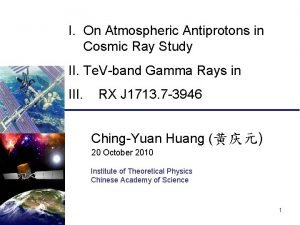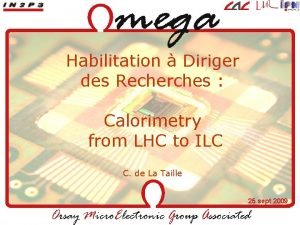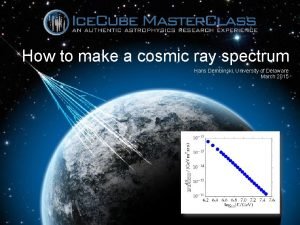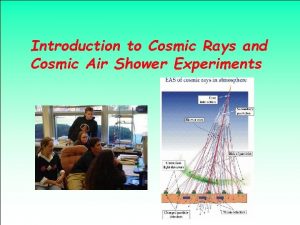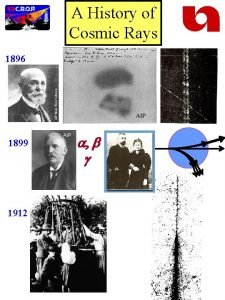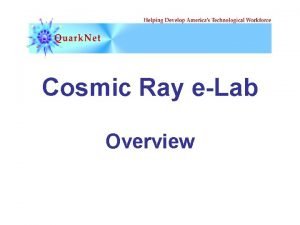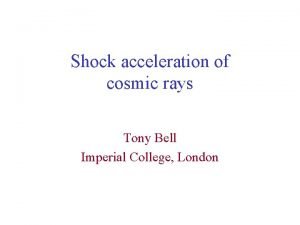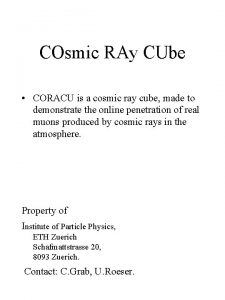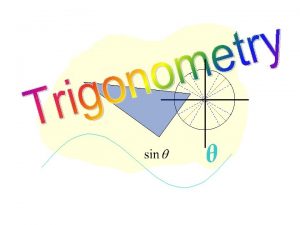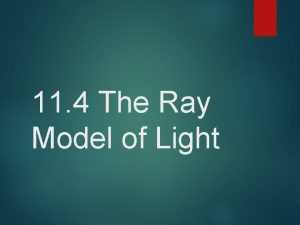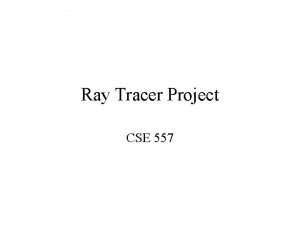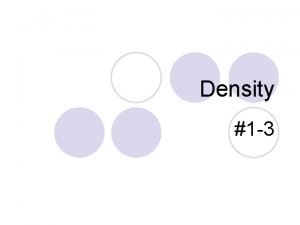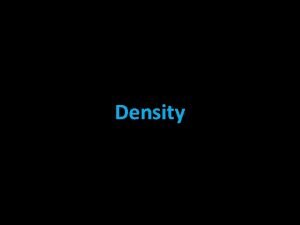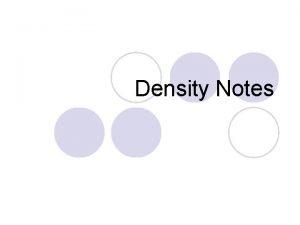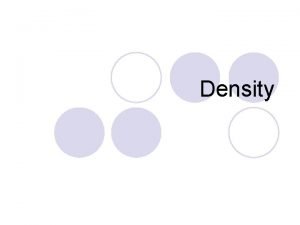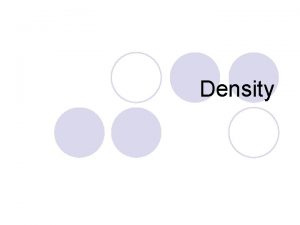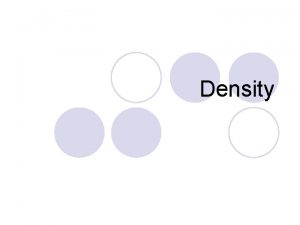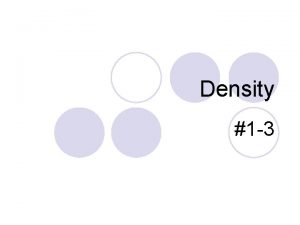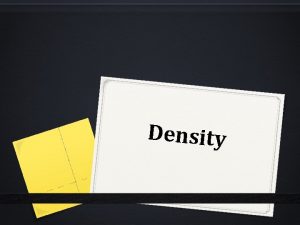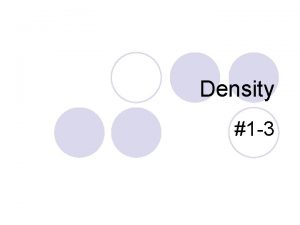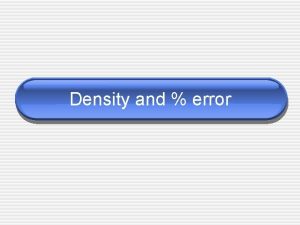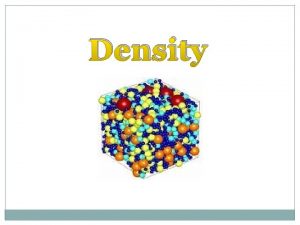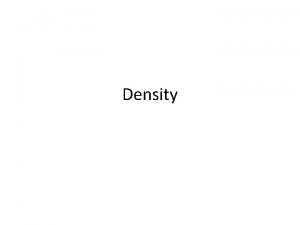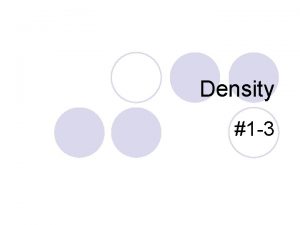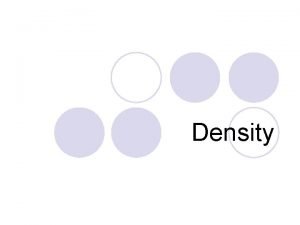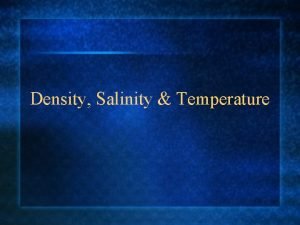Slides for the discussion Cosmic ray density Cosmic




















- Slides: 20

Slides for the discussion Cosmic ray density

Cosmic ray density. Cosmic ray is useful for the alignment between plates. not necessary for the location. Higher density Fake (cosmic ray) interaction. Decay search Momentum measurement Bern example. Fake stop Multi candidates in CS->ECC connection. Lower density Momentum measurement accuracy? . Maximum measurable momentum.

ECC with black CS (current Nagoya strategy. ) 1. General scan the downstream plates(3~5). 2. search vertex candidates. 3. Scanback or Direct vertexing. nd, 3 rd, Strong worry about the 2 vertex by cosmic ray. --> no cosmic on the ECC with black CS. ECC downstream Next talker, Takahashi.

Momentum measurement Strongest interest on the muon from tau decay. Most of them are below 5 Ge. V. Or 10 Ge. V. Momentum of mu from tau decay.

Momentum measurement by angular method Cell 1/2 No need fine alignment

Momentum measurement by coordinate method Cell 3/2 dx Fine alignment is needed. Position resolution is sqrt(6)* (x)

Position resolution by current cosmic ray exposure. SUTS data by 24 h cosmic exposure 1 cm^2 0. 9 micron for X 0. 75 micron for Y (momentum cut by angular method. ) dx (dx) = sqrt(3/2)* (x)

dx (dx) = sqrt(3/2)* (x) 1 cm x 12 plates 226 tracks in scanning area (nseg>=5 theta<0. 5)

1. 4 cm x 11 plates dx 369 tracks in scanning area (dx) = sqrt(3/2)* (x) From the point of alignment. Higher cosmic density doesn't give higher resolution. 1/3~1/5 of current exposure is enough to get same alignment accuracy(1 micron).

Bigger scanning area give a number of track. It is competition between emulsion XY distortion and the scanning power.



Alignment for long range (cell length >=3, 5) The accumulation of the alignment error is of the order of Cell 1/2(in worst case). For example, cell length = 3, sqrt(6)*1 micron = 2. 4 micron. Cell length = 5, sqrt(10)*1 micron=3. 2 micron. On the other hand, the signal of the coordinate method is Cell 3/2, which is enough big. Cell 3/2

From the point of alignment. Higher cosmic density doesn't give higher resolution. 1/3~1/5 of current exposure is enough to get same alignment accuracy(1 micron).

Ntrack = 281 starting from first 2 plate && nseg>=3

Angle resolution (including scattering. ) Rms = sqrt(rms(theta 1)^2 + rms(theta 2)^2) rms(theta) = 1. 2/sqrt(2) = 0. 85 mrad




dx (dx) = sqrt(3/2)* (x) Including scattering. theta^rms cut = 5 mrad for each cell.
 Cosmic rays
Cosmic rays Bit flip cosmic ray
Bit flip cosmic ray Cosmic ray
Cosmic ray Cosmic air flights
Cosmic air flights Cosmic ray
Cosmic ray Cosmic ray elab
Cosmic ray elab Cosmic ray spectrum
Cosmic ray spectrum Cosmic ray cube
Cosmic ray cube A small child slides down the four frictionless slides
A small child slides down the four frictionless slides Force and work relationship quick check
Force and work relationship quick check Simple distillation discussion
Simple distillation discussion Unit circle with sin cos tan
Unit circle with sin cos tan Ray ray model
Ray ray model Ray casting vs ray tracing
Ray casting vs ray tracing Nda full dac
Nda full dac Planar density bcc 111
Planar density bcc 111 الوزن النوعي
الوزن النوعي Physiological density ap human geography definition
Physiological density ap human geography definition High arithmetic density
High arithmetic density Linear density of atoms
Linear density of atoms En lathund för arbete med kontinuitetshantering
En lathund för arbete med kontinuitetshantering
